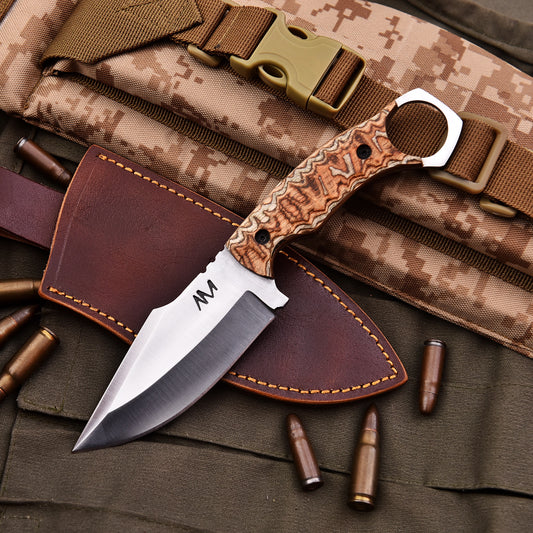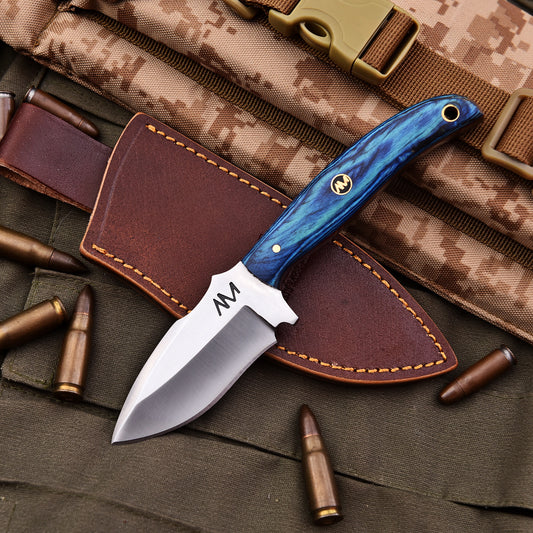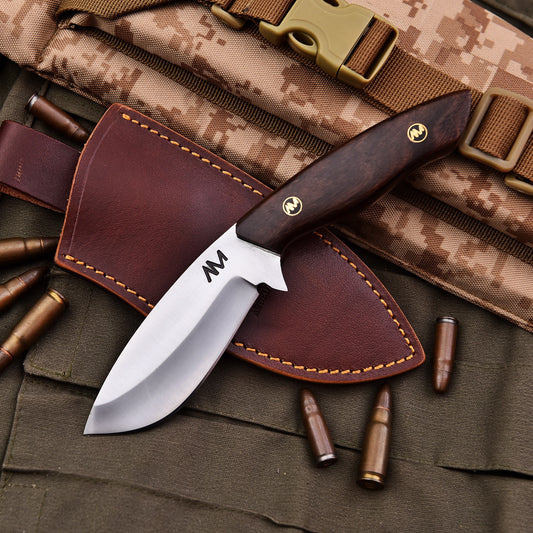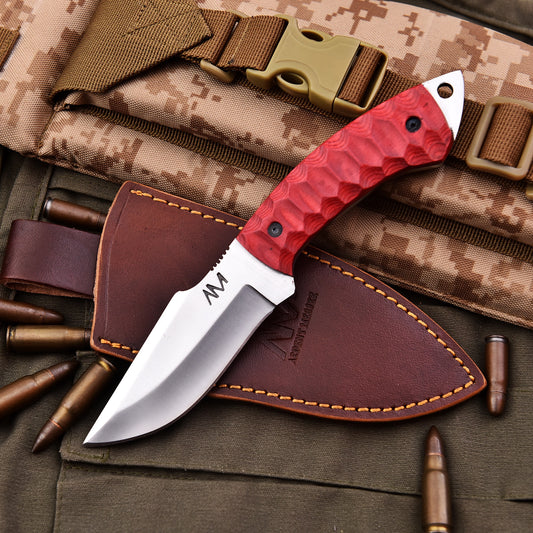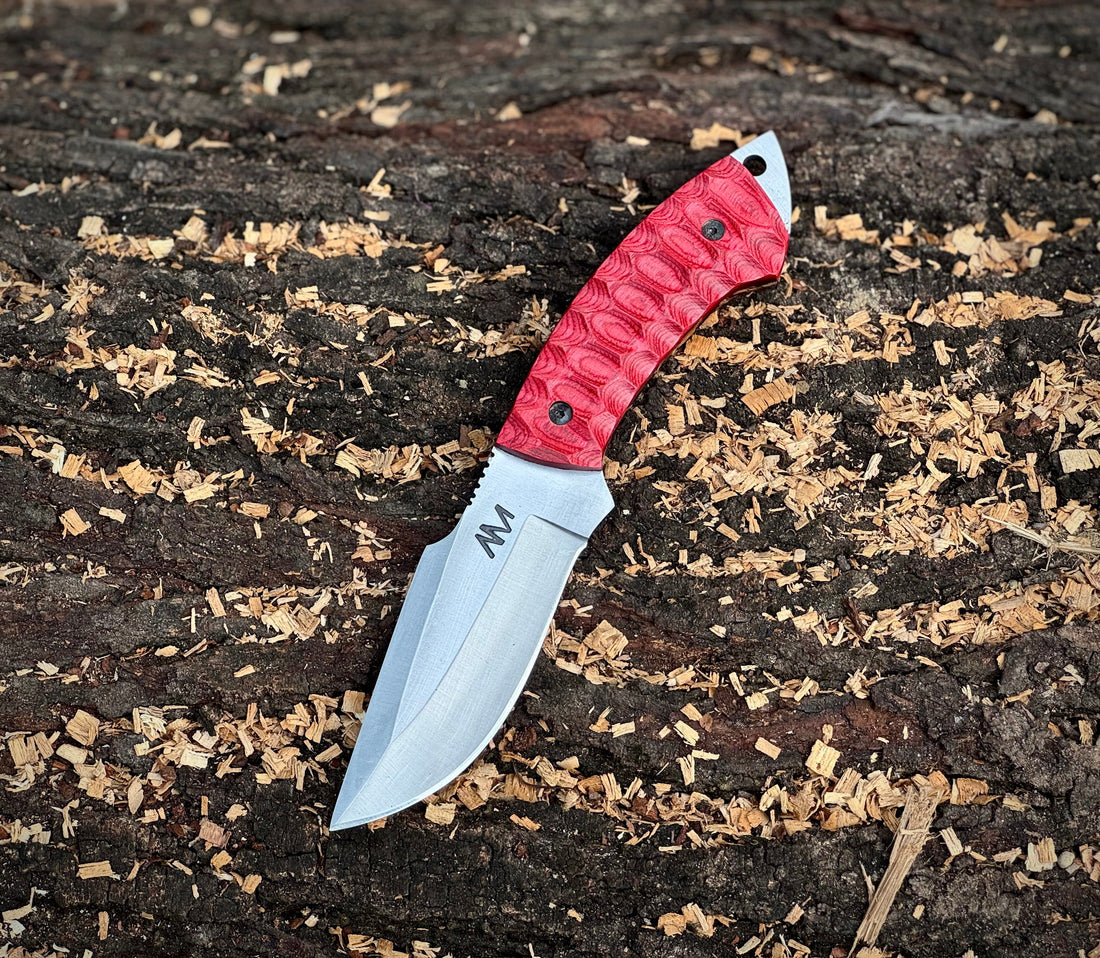
How to Choose the Perfect Fixed Blade Knife for the Outdoors
Share
How to Choose the Perfect Fixed Blade Knife for the Outdoors — A No-BS Field Guide for Real-World Use
When you’re out in the wild, your blade isn’t just gear — it’s commitment. It’s a lifeline between you and the chaos of nature, and for those who know the difference, a fixed blade knife is non-negotiable.
But here’s the truth:
Most knives are built to look good on shelves, not to survive the field.
So if you're tired of factory-stamped gimmicks or folding toys dressed up as survival tools — this guide will walk you through exactly what matters when choosing a real fixed blade knife built for the outdoors.
1. Full Tang or Forget It
Let’s be blunt — if your knife isn’t full tang, you’re playing with fire.
In survival, edge retention and comfort don’t matter if your knife snaps at the handle when you’re batoning wood or prying frozen gear. A full tang knife ensures the steel runs through the entire handle, providing structural strength and balance.
At Ardent Messer, every blade is full tang. Period. We don’t compromise, because your knife shouldn’t.
2. Know Your Steel — Not Just the Name, but the Soul
If you buy a knife without understanding the steel, you're gambling with performance. Let’s break down the real-world application:
-
D2 Tool Steel
Semi-stainless. Excellent edge retention. Tough enough to baton, skin, or process firewood. Slightly harder to sharpen in the field, but it holds an edge through punishment.
Best for: Rugged environments, hunting, EDC with maintenance gear. -
High Carbon 1095
Field favorite. Easy to resharpen on a rock if needed. Incredible for bushcraft and survival. Needs regular oiling to prevent rust.
Best for: Bushcraft, carving, dry to medium-wet conditions. -
Sandvik / Stainless Options
Low maintenance. Good for wet climates or saltwater exposure. Loses edge faster but easy to restore.
Best for: Coastal use, backup knives, wet or humid carry.
Steel is not about the name — it’s about your use case. We match each blade with the right steel, depending on whether it’s built for field dressing, camp work, or tactical carry.
3. Blade Geometry Isn’t Preference — It’s Purpose
A blade isn’t about looks. The shape tells you everything about its attitude.
-
Drop Point
Strong spine. Controlled tip. Versatile. This is your generalist — skinning, batoning, carving.
Used by military, hunters, and outdoor guides alike. -
Clip Point
Thinner tip for fine work. Great for detail cuts or game prep. But slightly weaker tip for prying.
Best for: Hunters, EDC enthusiasts who value precision. -
Bull Cutter / Modified Tanto / Tracker
Heavier bellies, forward weight. Made for chopping, striking, and close-quarters punishment.
Best for: Hard-use survival, field clearing, bushcraft. -
Gut Hook
Niche but essential for field dressing large game without piercing organs.
The blade shape should match your mission — not the shelf label.
4. Handle Ergonomics — Not Just Grip, but Endurance
If your handle isn’t comfortable after 3 hours of use, it’s a liability.
We’ve field-tested every contour of our knives. Whether you’re choking up for fine control or swinging hard, your knife should feel like an extension of your hand — not a tool fighting against it.
Material Talk:
-
G10: Tough. Grippy. Won’t shrink, warp or crack. Excellent in wet or tactical use.
-
Micarta: Gritty, responsive texture. Improves grip when wet. Ideal for long sessions.
-
Wood/Stag: Beautiful, traditional, warm. We stabilize our natural handles for performance. Best for light-to-medium field use.
Each Ardent Messer handle is precision-shaped — no hot spots, no slip zones, no gimmicks.
5. The Sheath is Half the Knife — Respect It
You’ll carry your knife far more than you’ll use it. That’s why retention, draw speed, and wearability matter.
We design sheaths for real field carry, not kitchen drawer storage:
-
Hand-sewn leather for heritage pieces
-
Kydex for tactical and modular setups
-
Multiple carry positions (horizontal, vertical, scout)
Final Thoughts from the Field
Knives don’t lie.
Either they perform when the weather turns, or they fail — and take you down with them. That’s why we don’t mass-produce blades. We build them. Every knife that wears the Ardent Messer name is tested, refined, and designed by people who actually carry.
Whether you’re setting up base camp, quartering your first elk, or simply want gear you can bet your name on — your fixed blade knife is your edge.
🗡️ Ready to find yours? Explore our Field Utility Collection


